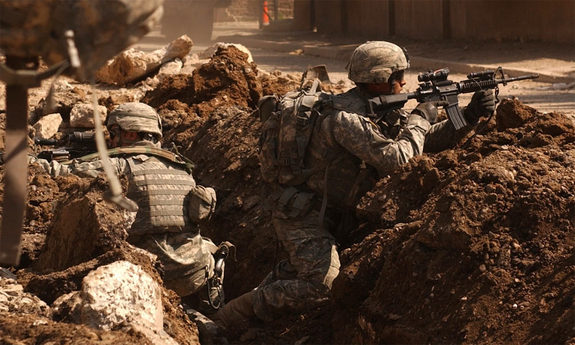Heat-Proof Makeup Protects Soldiers from Bombs

A new type of camouflage makeup promises not only to hide troops from the enemy, but also to protect soldiers' skin from the blazing heat of an explosion.
Soldiers are at the mercy of two dangerous blasts when they are exposed to a roadside bomb detonation or any other powerful explosion, explained researcher Robert Lochhead, of the University of Southern Mississippi.
"First comes a blast wave of high pressure that spreads out at supersonic speeds and can cause devastating internal injuries," Lochhead said in a statement. "A thermal blast follows almost instantaneously. It is a wave of heat that exceeds 1,112 degrees Fahrenheit (600 degrees Celsius). That’s as hot as a burning cigarette. The thermal blast lasts only two seconds, but it can literally cook the face, hands and other exposed skin."
These injuries sometimes can be made worse by oil or wax-based face paint that melts or ignites on the skin. But Lochhead and his team said they've devised a makeup that protects the face and hands for up to 15 seconds before its own temperature climbs to the point where a mild first-degree burn is possible. In some tests, they said that window of protection grew to 60 seconds.
To create a heat-proof makeup, the researchers turned to silicones, which are not as flammable as the fatty substances in traditional face paint. The team also had to find a way to safely incorporate DEET, a flammable insect repellent, which must make up 35 percent of all camouflage makeup, according to a mandate from the military. Lochhead said his team encapsulated DEET it in a hydrogel substance, a water-rich material, preventing it from catching fire.
Lochhead detailed his findings Wednesday (Aug. 22) at the annual meeting of the American Chemical Society (ACS). His team plans to test the makeup on other surfaces to create a protective layer for clothing, tents and other items and they are developing a colorless version that could be used by civilian firefighters, according to an ACS statement.
Get the world’s most fascinating discoveries delivered straight to your inbox.



